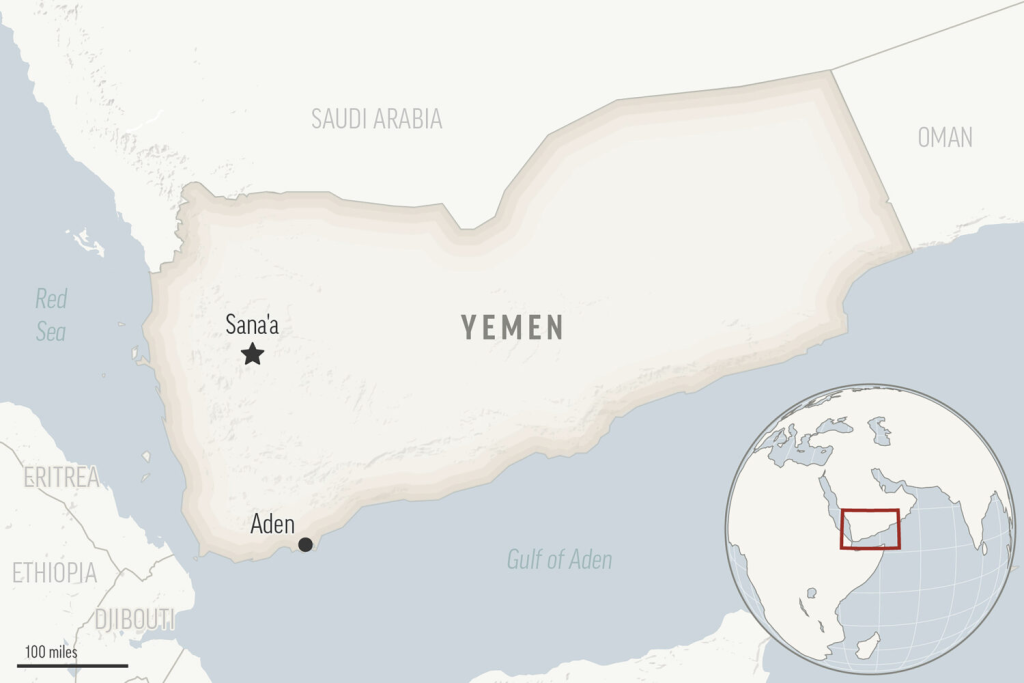Recent military actions have stirred intense debate about U.S. involvement in Yemen. President Donald Trump announced decisive airstrikes against Houthi targets in Yemen. This article delves into the details of these airstrikes and explains who are the Houthis and where are the Houthis in Yemen.
Did The U.S. Attack Yemen?
President Trump declared on his Truth Social platform that he had ordered “decisive and powerful military action” against Houthi terrorists in Yemen. According to the announcement, the airstrikes targeted Houthi positions in Yemen’s capital, Sanaa, as well as other strategic locations. Trump claimed that these operations were necessary to protect American and allied maritime assets after a series of Houthi attacks on U.S. Navy ships and commercial vessels in the Red Sea and Gulf of Aden.

Critics argue that this aggressive posture marks a significant escalation in U.S. military activity in the region. Trump’s statement emphasized that if the Houthis continued their assaults, “HELL WILL RAIN DOWN UPON YOU LIKE NOTHING YOU HAVE EVER SEEN BEFORE.” This rhetoric has fueled a contentious debate on the extent of U.S. intervention in Yemen and its long-term implications for regional stability.
Where Is Yemen?
To understand the context of these military actions, it is crucial to know where is Yemen. Yemen is located at the southern tip of the Arabian Peninsula, bordered by Saudi Arabia to the north and Oman to the east. Its strategic location along the Red Sea and near the Bab el-Mandeb Strait makes it a critical hub for global trade, particularly for oil and liquefied natural gas (LNG). The nation is divided between areas controlled by different factions, with the internationally recognized government based in the southern port city of Aden and rival groups holding sway in the north.

Yemen’s complex political and social landscape has made it a focal point of regional conflicts. Its tumultuous history, marked by civil war and external interventions, has left the country in a fragile state, where military actions such as U.S. airstrikes can have far-reaching consequences.
Who Are the Houthis?
A key player in this conflict is the Houthi movement. Who are the Houthis? Officially known as Ansar Allah, the Houthis are an armed political and religious group that emerged in the 1990s. They primarily represent Yemen’s Shia Muslim Zaidi minority and have been a dominant force in the Yemeni conflict since 2014, when they seized control of Sanaa, the capital.

The Houthis are known for their anti-Western stance and their alignment with Iran, from which they are believed to receive military support, including weapons, training, and strategic guidance. Their campaign against U.S. and allied interests in the region has been marked by repeated missile attacks on naval vessels and commercial shipping. This ongoing threat has led the U.S. and its allies to take a more assertive military stance in the region.
Where Are the Houthis in Yemen?
Understanding where are the Houthis in Yemen is key to grasping the full impact of the current airstrikes. The Houthis control vast swathes of northern and western Yemen, including the capital city, Sanaa, and significant portions of the country’s coastline along the Red Sea. Their dominance in these areas has allowed them to establish a de facto government, complete with tax collection and local governance.

The strategic control of Sanaa and the surrounding regions has made the Houthis a formidable force, capable of launching attacks on both military and commercial targets. Their presence along the Red Sea is particularly alarming to international stakeholders, as this corridor is vital for global trade and the safe passage of shipping.
The U.S. airstrikes have elicited mixed reactions on the international stage. While some allies view the strikes as a necessary step to protect maritime security, others warn of the risks of further escalation in an already unstable region. Iran’s Foreign Minister, Abbas Araghchi, condemned the attacks, calling on Washington to “end support for Israeli genocide” and to stop the killing of Yemeni people.
Amid these tensions, the situation in Yemen remains dire. The ongoing conflict has already claimed the lives of over 160,000 people and displaced millions. The international community continues to call for a peaceful resolution, yet military actions like these airstrikes underscore the fragile and volatile state of affairs in Yemen.
Stay tuned for further updates on this developing story as we’ll see how global leaders and military officials react to these unprecedented and unexpected U.S. bombings in Yemen.


